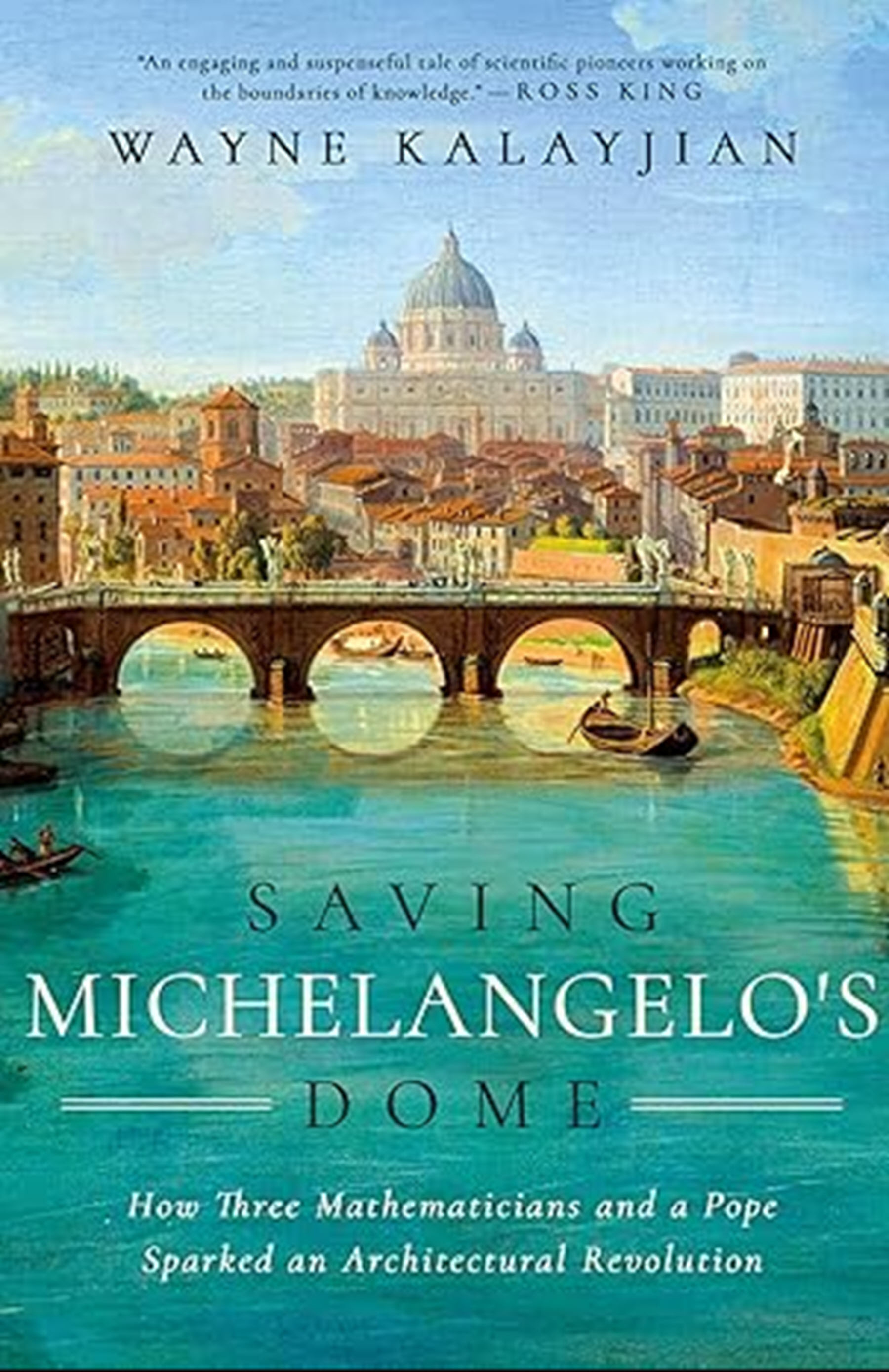By Ray Bert
Saving Michelangelo’s Dome: How Three Mathematicians and a Pope Sparked an Architectural Revolution, by Wayne Kalayjian. New York City: Pegasus Books, 2024; 288 pages, $29.95.
Say “Michelangelo” and most people will generally think “sculptor” (David) or “painter” (Sistine Chapel) first. For that matter, some may well see “Michelangelo’s Dome” in the book’s title and first assume (as I did) that it is about the Sistine Chapel.* But in fact this book is about none of those things.
Michelangelo was also an architect of some renown in the 16th century. In Saving Michelangelo’s Dome we learn about an intense, successful, and groundbreaking effort to save St. Peter’s Basilica, a structure that Michelangelo helped design, nearly two centuries after his death. The story is one that, according to the author, laid the groundwork for the modern approach to engineering.
Further reading:
- Technically speaking, this is what makes ASCE’s Beach Reads for 2024 something special
- Civil engineers create wonders of the world
- Tent of the heavens
More than 400 years after it was completed, St. Peter’s is still, by some measures, the largest Christian church building in the world. Located in Vatican City, the iconic structure took more than 80 years to design, redesign multiple times, and complete after the laying of the foundation stone in 1506. As the book explains, after 40 years of architectural handoffs, 71-year-old Michelangelo reluctantly agreed to become the master builder in charge of the basilica. Though he did not live to see its completion in 1590 and changes were made to his design, including to his dome, he is regarded as one of the principal designers and the driving creative force behind finally getting the project moving toward completion.
As important and rich in detail as the lengthy period of the basilica’s design and construction is, spanning the reigns of more than a dozen popes, it is only the appetizer of the story by first-time author Wayne Kalayjian, P.E., M.ASCE. The main course begins afterward. Cracks began appearing in the massive dome and slowly worsened over the next 150 years. Fast-forward to the 1740s as Pope Benedict XIV took over, and the problem could no longer be ignored. The cracks, some reportedly big enough to step through, threatened the dome with collapse.
What follows is a fascinating and detailed account of the race to better understand the dome’s enormous thrusting forces and its resistance, which the book notes are today known as demand and capacity. It is in these descriptions that Kalayjian’s background and ability to explain are invaluable, for he is anything but a novice when it comes to engineering and architecture. A degreed civil and structural engineer, as well as a lecturer at the University of Southern California, he has had a long career designing everything from bridges, buildings, tunnels, and airports to pipelines, railroads, data centers, and power stations.
The “three mathematicians” referenced in the title, brought in by Pope Benedict to supplement studies on the dome being done by architects, are revealed to be something more than that, particularly viewed in retrospect. As Kalayjian notes, they “were as knowledgeable as any in Rome (and in Italy)” when it came to the relatively new theories and disciplines of calculus, statics, equilibrium, mechanics, virtual work, and material science.
After presenting their analysis of the damage, which concluded that the insufficiently opposed thrust of the dome was the biggest threat, the three proposed that more buttresses and iron hoops were needed. This was not itself a new idea, but the author notes, with perhaps a touch of awe, that the way “they structured their next observation … made history.”

That proposal was to arithmetically calculate the dome’s thrust and compare it with the tensile capacity of the cast-iron rods to determine with precision how many rods and of what size were needed. “The observation was as profound as it was revolutionary,” Kalayjian writes, “and it marked a radical departure from the vagaries of intuition, personal judgment, and rules of thumb that had governed the world of construction for thousands of years. … In these three short months, they created what we know today as the practice and profession of engineering.”
Steeped heavily in technical detail that should prove satisfying to the engineering reader, Saving Michelangelo’s Dome also manages the additional feat of being historically compelling, including the contributions of many other minds and characters who played roles in the centuries-long problem and solution. And, not least, Kalayjian simply writes well and with an episodic approach to the storytelling at the book’s heart that, if you will, provides the elegantly designed structural support to contain the thrust of this weighty and historic tale.
*Granted, some percentage of the population, Gen Xers in particular, may also very well think “Teenage Mutant Ninja Turtle” (skateboard and nunchucks).… I would apologize on their behalf for my generation but, well, we do love our pop culture don’t we?



